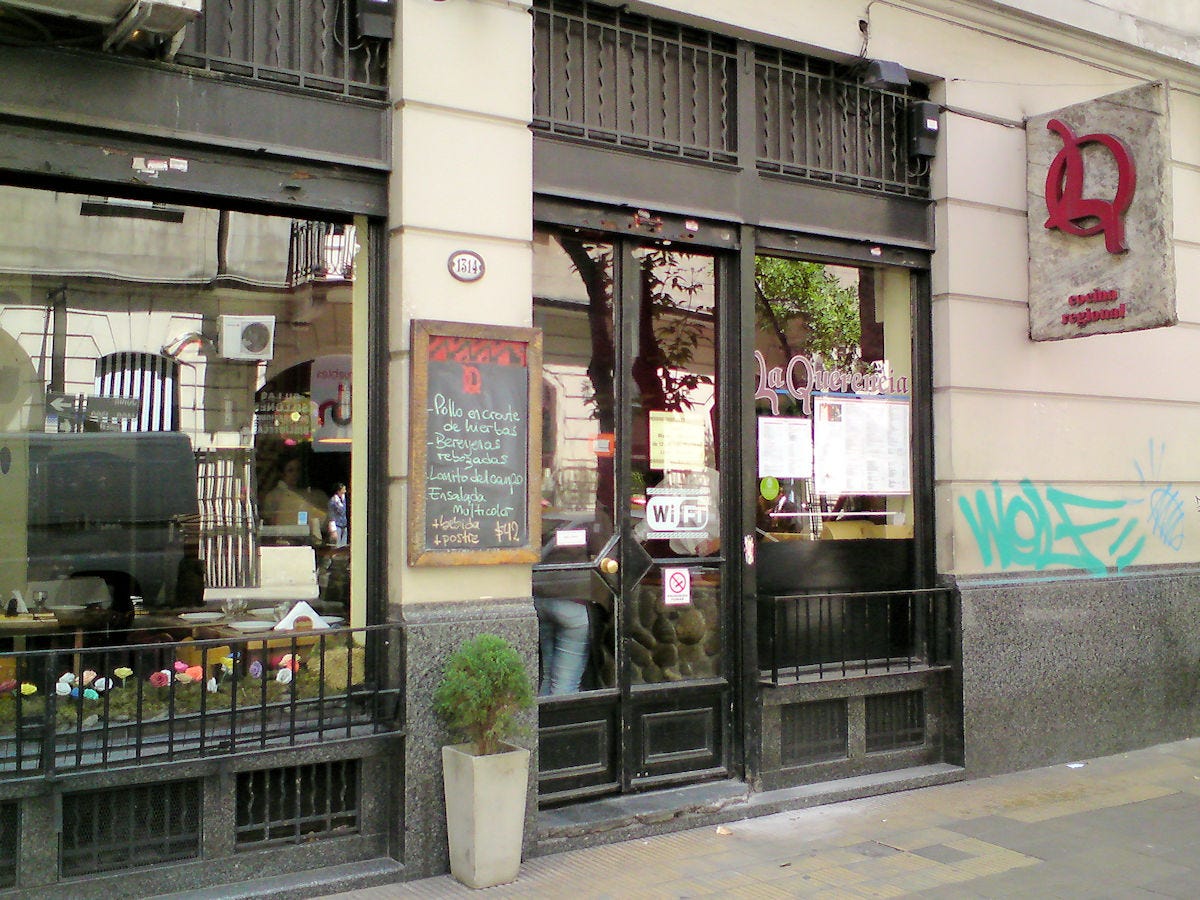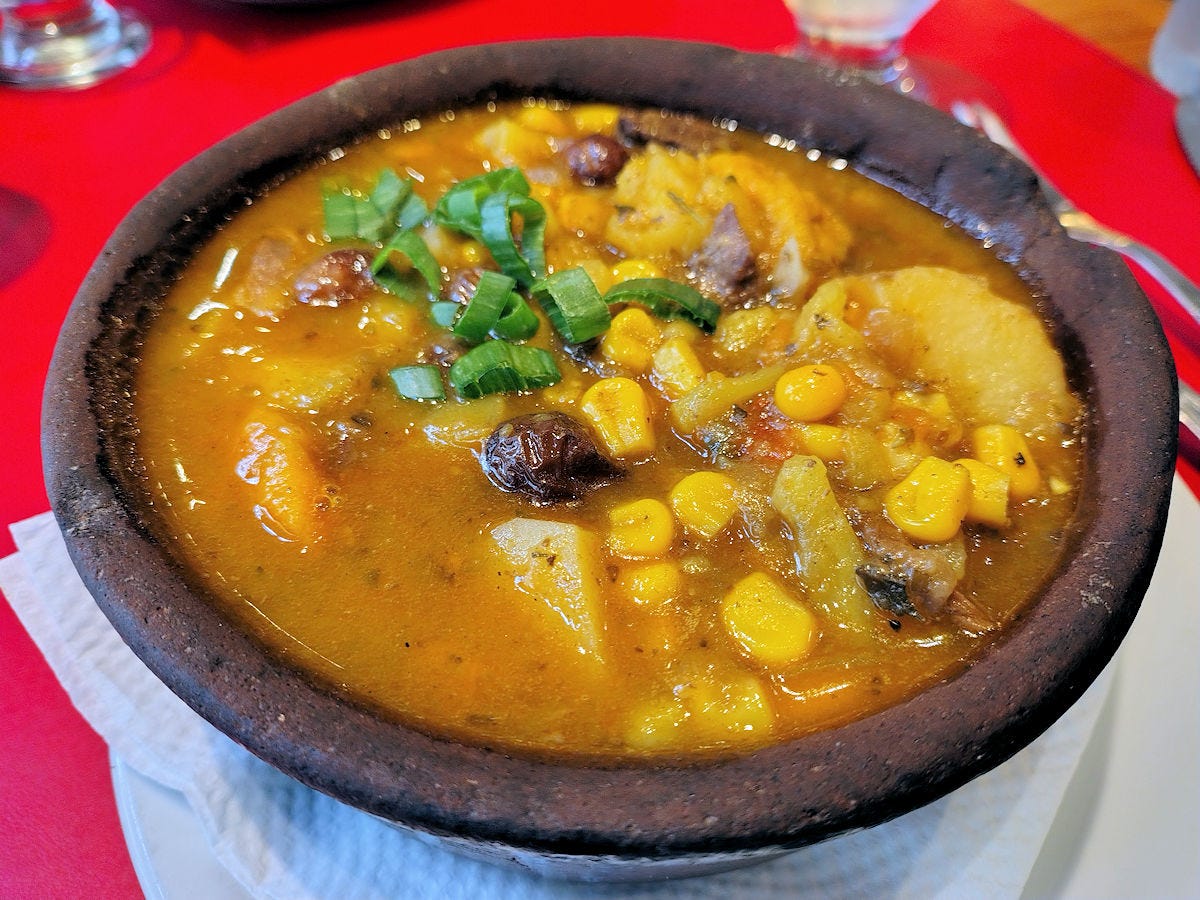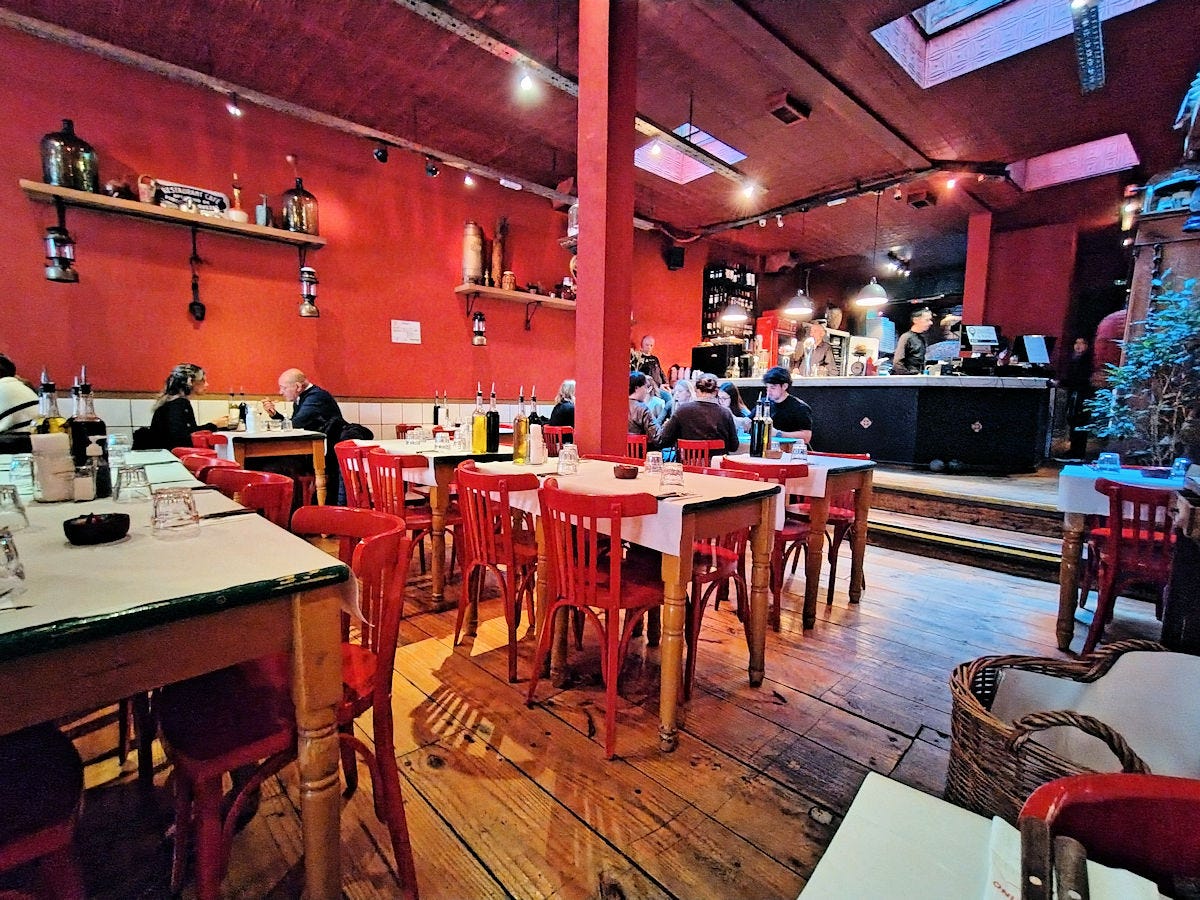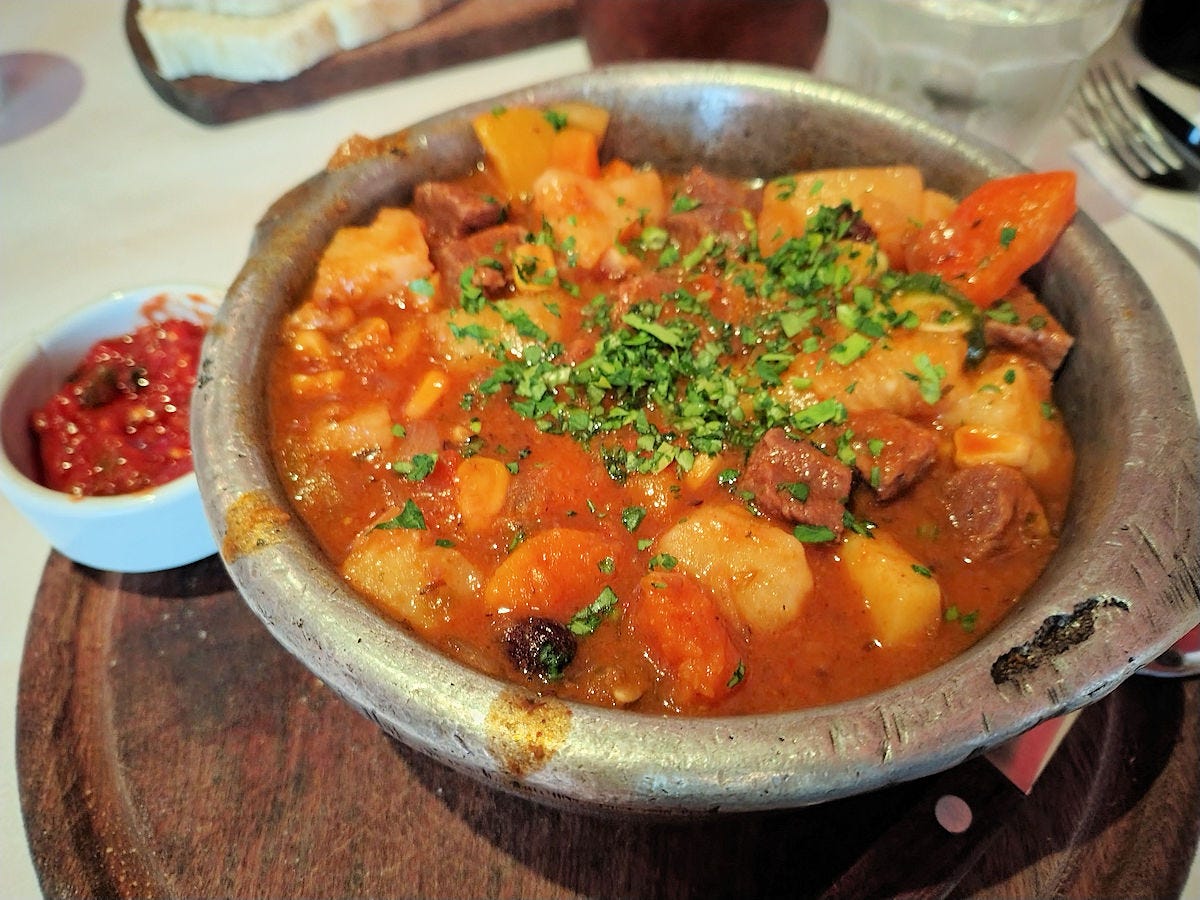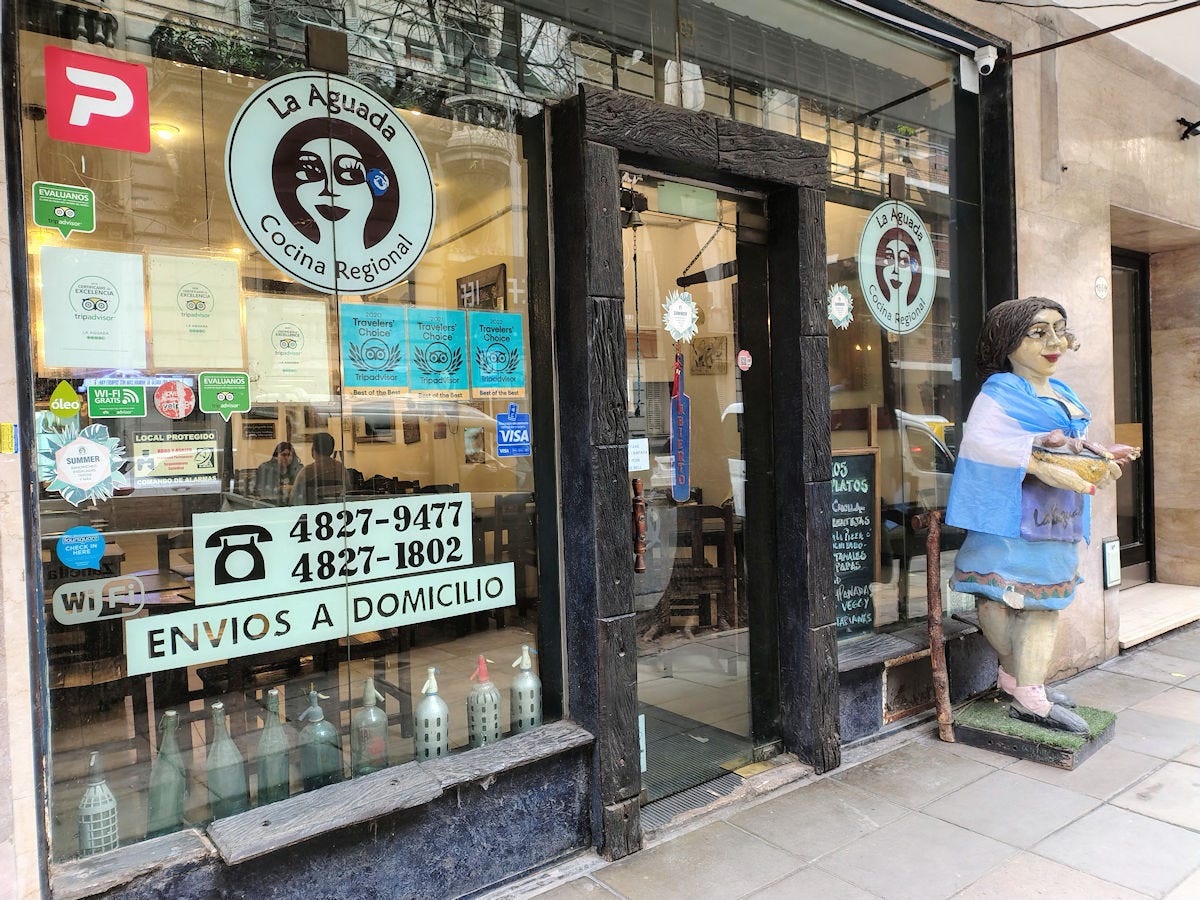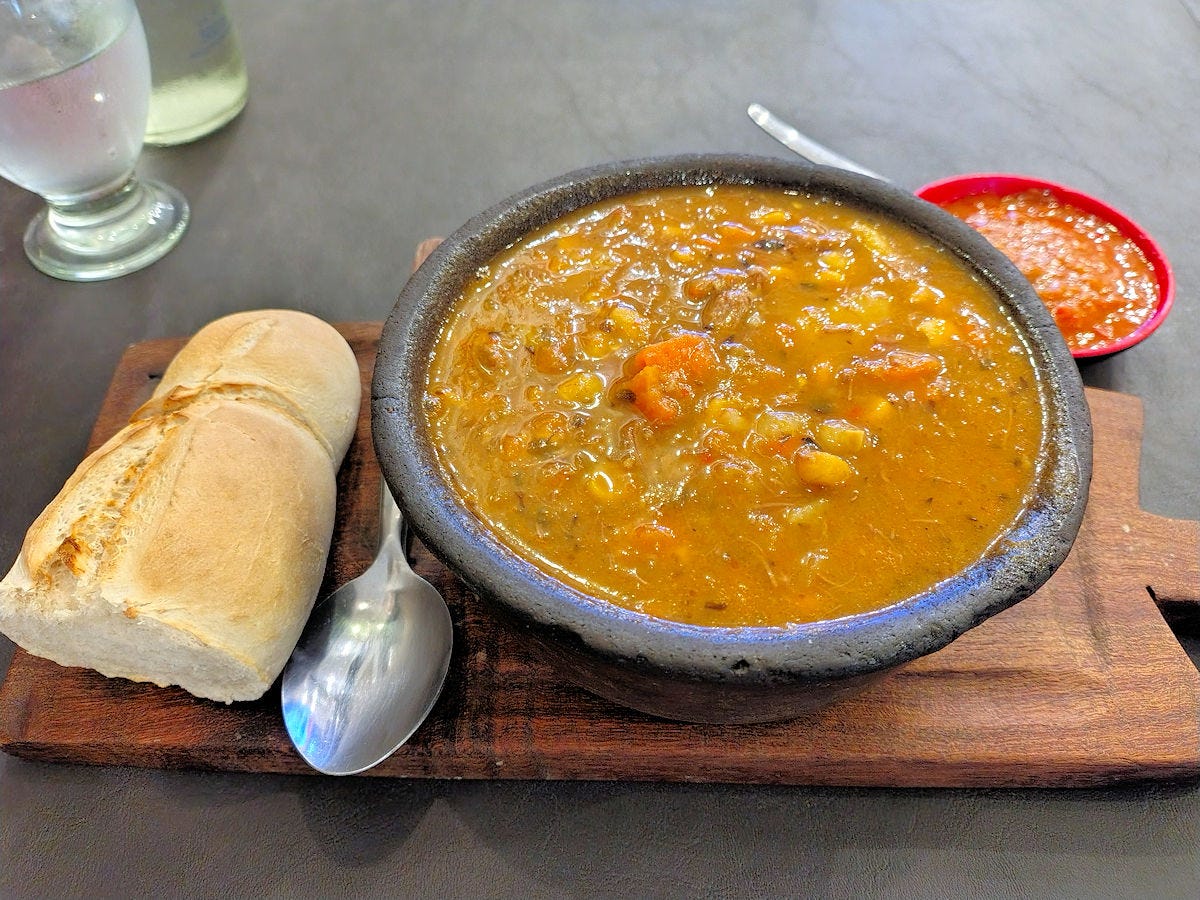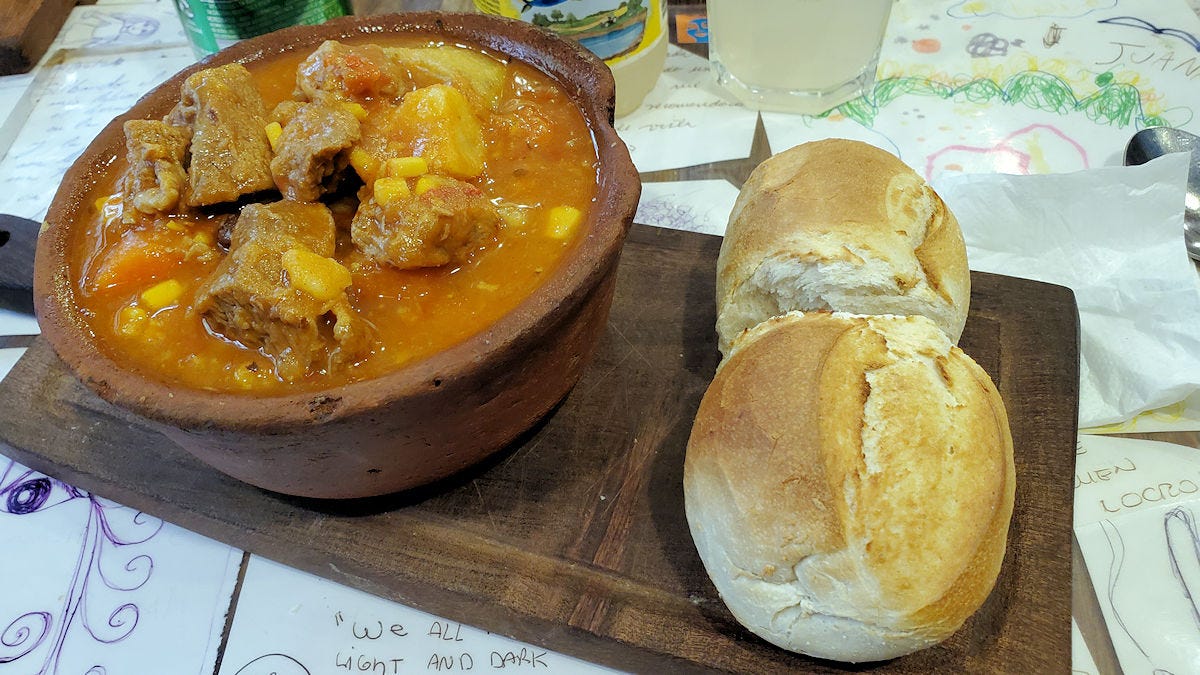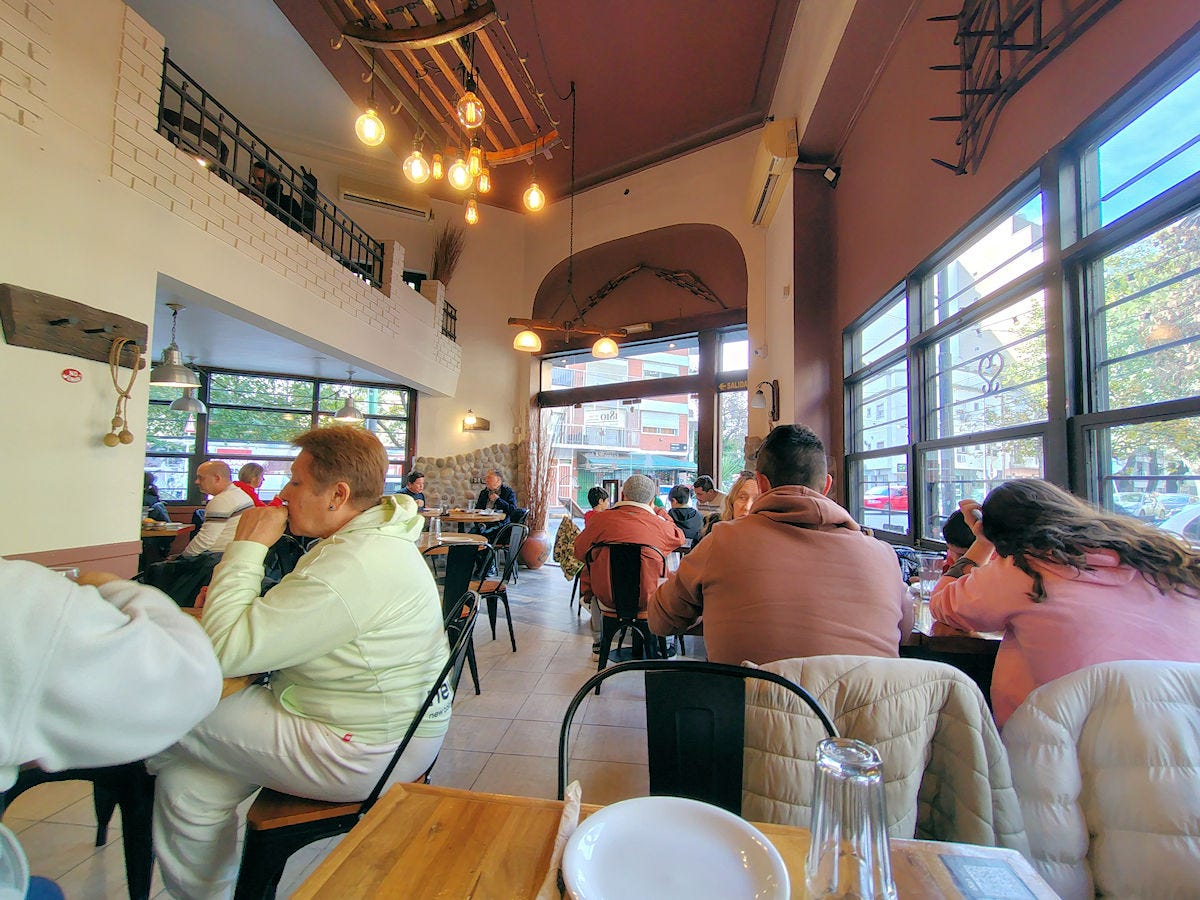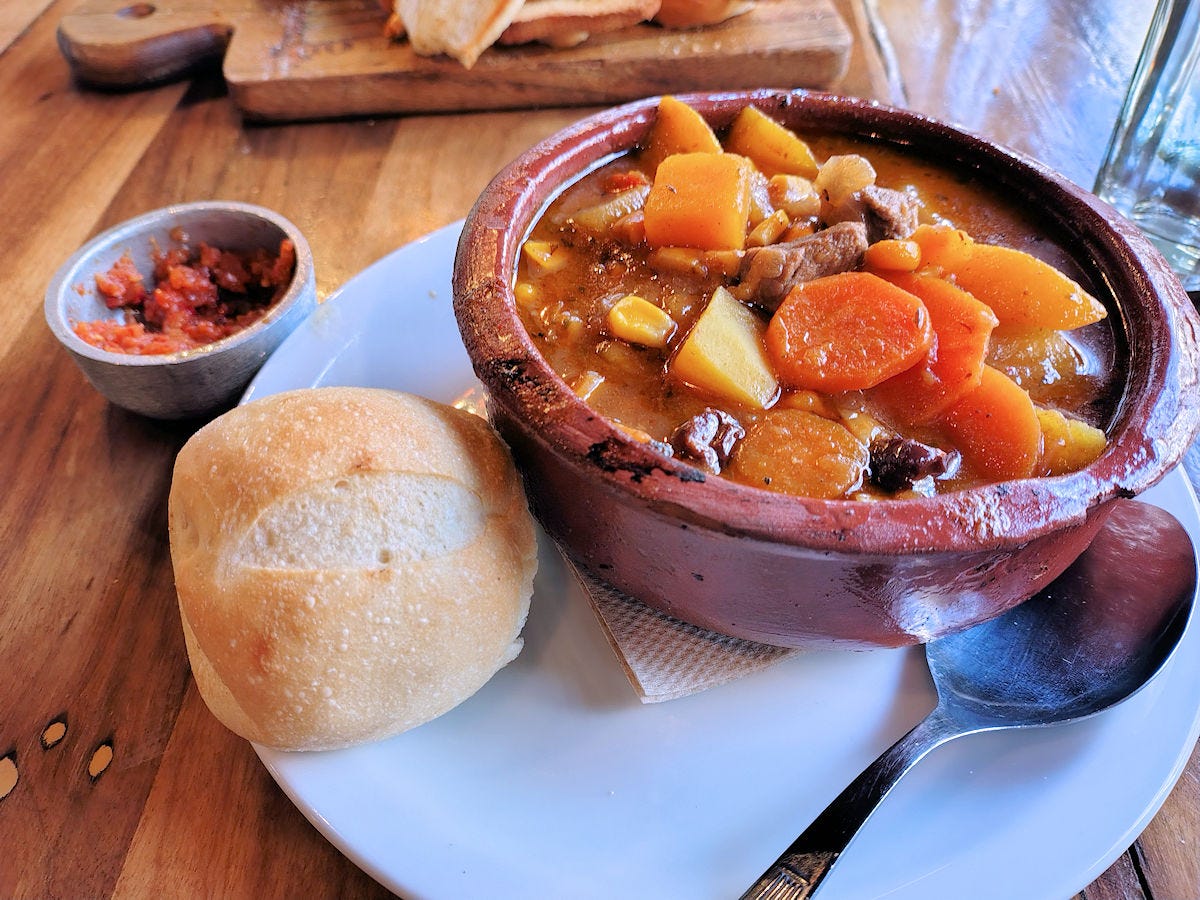Squash It!
In which I explore one of Argentina's four traditional stews that has its origins via Belgium, Spain, and Chile.
It’s a curious sort of work, digging for diamonds in a coal mine, an apt metaphor for today’s post. I set to work uncovering the history of one of Argentina’s four national stews. Now, the one best known, locro criollo, is the official national dish, and I’ve explored it, and other variations of locro in my writings over the last twenty years. The others are the mondongo, tripe stew; lentejas, lentil stew (which, I’m now surprised, I’ve never written up my recipe for, though close, I wrote a piece for the Buenos Aires Herald years ago offering up a vegetarian version of the stew), and today’s focus, carbonada, a squash based stew, though that feels too simplistic.
We have to go way back to the 17th century, in what is modern day Belgium, where coal miners used to marinate beef in beer - partially to help keep it from spoiling as they carried it - and then grilled up over some of the coal they dug up. Often topped with grilled onions, this carbonnade morphed at some point into a beef, onion, and beer stew called carbonnade flamande.
Now… the Spanish come into play via the Spanish Netherlands, a territory that Spain occupied on behalf of the Hapsburgs, from 1556 to 1714, and which encompassed what later became Belgium. By the mid 18th century, many of the Spanish soldiers who served in the latter years of that occupation were retasked to one of the four viceroyalties of Spain in South America. Of import to today’s story, the Viceroyalty of Peru, which encompassed Peru, Bolivia, Paraguay, Chile, and most of Argentina.
Cue the miners in the Cuenca del Carbón, the coal mining region of Chile, who used to cook up their version of an indigenous stew that involved local produce - squash, corn, potatoes - and meat. Recalling the miners’ stew from their service in Belgium, the Spanish conquistadors began referring to it as carbonada, the Spanish version of the Flemish carbonnade. From there, over time, the stew made its way throughout Chile, Argentina, and southern Bolivia and Peru.
So what makes a carbonada here in Argentina? The “official” traditional recipe seems to specify squash (either zapallo cabutia or zapallo plomo, respectively the Kabocha and Gray-Lead squashes), sweet potato, carrot, corn, onion, red bell pepper, meat - usually brisket or chuck, though in past times, beef jerky was often used, and, a key ingredient for a touch of sweetness, orejones -dried peaches or apricots - usually the former. Options for inclusion - other dried fruits, raisins are quite common, zucchini, and/or rice. If you want to go really traditional, it’s served in, or even baked in, a hollowed out squash.
Now, carbonada is not nearly as easy to find in restaurants as the other three stews. I’m not sure why - maybe it’s not as popular, I’ve never had someone say that I just had to go try the carbonada at one restaurant or another, but the other three, yes. But which one is cause and which one is effect - the ease of finding it or the number of recommendations? By 1872, the famed classic of Argentine literature of Martín Fierro waxes poetic about carbonada and nary a mention of the other three stews.
It actually took some tracking down to find restaurants that offer it as a staple on their menu as opposed to an occasional, usually holiday related special (most prominently on either May 25th for Revolution Day or July 9th for Independence Day). I checked some of my usual sources for good, local cuisines - Fonda de Olla, Pietro Sorba, and Antigourmet - the first two offer all holiday related or outside of BA locations, the latter doesn’t even mention the stew over years of restaurant sampling. But, here are a foursome of spots, all relatively near to home, where I sampled.
La Querencia, Junín 1314, Recoleta. This neighborhood eatery is our go-to spot for this sort of food, and it holds a special place in my heart, or stomach, as it was the first place at which I tried many Argentine regional specialties, starting back just a couple of weeks after moving here. This version is potato heavy - lots of big chunks of potato swimming in a rich broth with a fair amount of corn, sweet potato, some squash - far less than seems “correct”, though some of it is mashed into the broth to give it thickness, dried white peaches, plump raisins, some cubes of meat, but not many, and a bit of green onion. Hot sauce available (and used) on the side - which is the case for me for all of these - it gives a nice kick and a balance to the sweetness. I like this one, but it definitely features potato more than anything else. It also felt a little skimpy on the meat side. It comes in currently at $15600, or about US$13.50.
Cumaná, Rodriquez Peña 1149, in Recoleta, however, is my real favorite spot in the ‘hood for this sort of cooking. Maybe it’s the glass filled with crayons so that you can doodle on the white paper covering each table? Or maybe it’s just really good food. I first tried the place not long after the above, just a few months later after a recommendation from one of our local newspapers. This is a much meatier stew, and, for me, has a better balance between the various vegetables - adding in carrots to the above mix. It also comes with a fiery hot sauce, without having to ask. Upfront, this was my runaway favorite of the four spots. If I have any criticism of it it’s a little lacking in salt, but not by much. It’s oddly priced at $12457, probably something related to taxes, or a little under $11.
La Aguada, Billinghurst 1862, also in Recoleta. Now… I’m a little iffy on this one. I’d had the carbonada at this place before and liked it a lot. But it also looked like this…
…so, what gives? Well, when I arrived on this visit, I was first informed that they were out of carbonada, but as I was getting ready to leave and try a different spot, planning to come back again, the waiter returned to say that they had one portion left. I’m guessing I got served something that was just left in the bottom of a tupperware container, as it mostly consisted of just sort of mush. It still had great flavor, but everything was pretty indistinct. The hot sauce was decently spicy. But I think I’d much rather have had them just stick with “we’re sold out”. Had this been my first impression of the place, I’d have walked away thinking the restaurant wasn’t very good, but I’ve been there a few times and always liked what I’ve had, so I’ll chalk it up to a bad call on the part of the kitchen or manager. $12000, or just over $10.
1810 Cocina Regional, Julián Álvarez 1998, Palermo. One of three locations of this restaurant, I first encountered it about nine years ago, or at least that’s the first time I tried it. They’re famed for offering various different combos - at the time, they had a lunch special with mini-versions of a choice of three of the four national stews. That wasn’t on the menu this time, but there was a choice of stew and beverage combo on offer. Now, that first time around, I’d found their carbonada to be just a bit too sweet for my tastes. The same is still true. The stew is both heavy on squash and carrot, but also, to my palate, they seem to use canned peaches rather than the dried ones, so the slices of peach in there are very sugary. It’s also a bit light on the meat side - maybe two decent sized chunks and then the rest just some shredded bits. The hot sauce is also not very hot - in fact, it came with the bread on the table and I thought it was just a tomato relish… well, it is - tomato, onion, and something vaguely spicy. $12000 (or $12800 in combo with beverage, if you pay in cash), or again, just over $10.
Now, all of these had a core of similarity, but as with anything of this nature, the spicing and balance of ingredients is where things shine or burn out. Easily, as I said, top of my list is the carbonada from Cumaná, with La Querencia in second place, La Aguada (assuming the first time I tried it is the real version) in third, and 1810 Cocina Regional trailing. I’m sure there will be more down the line.


